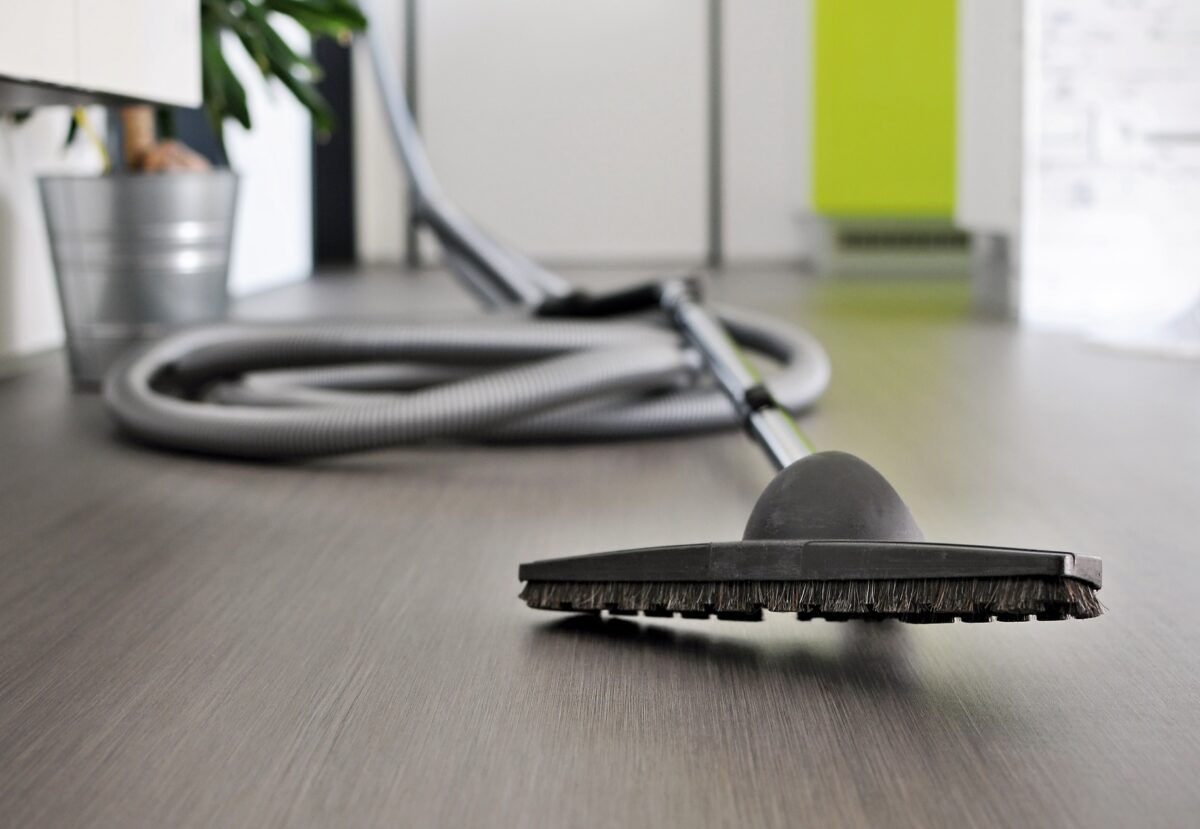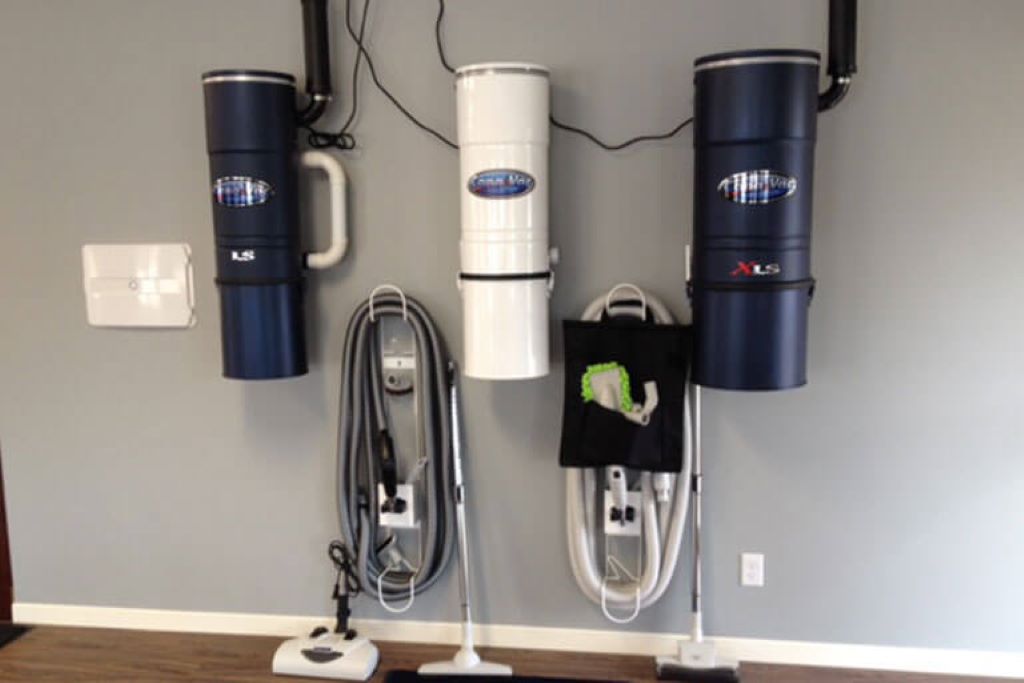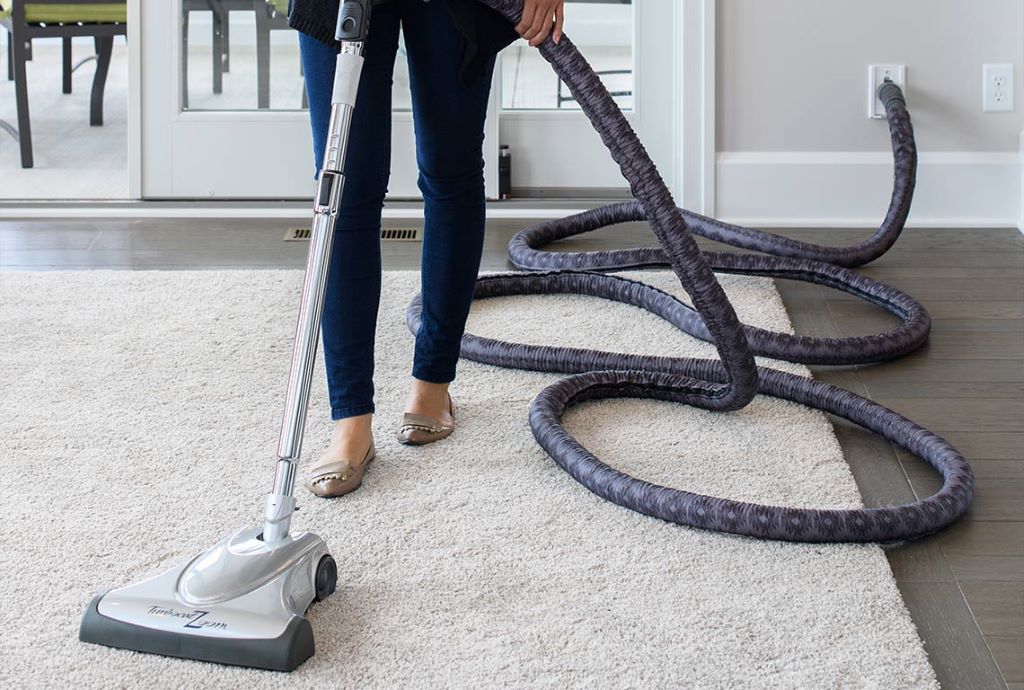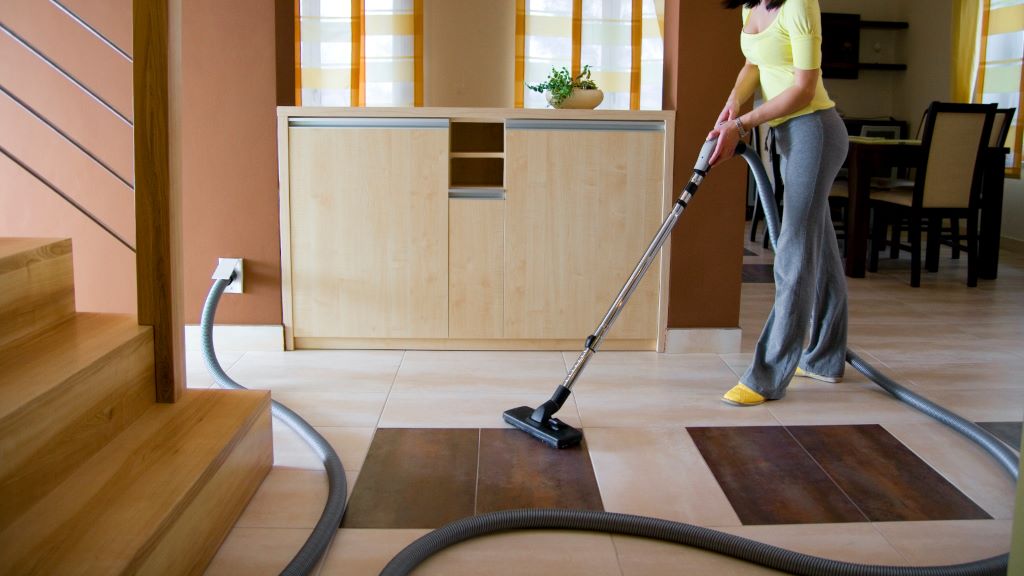A central vacuum system is one of the best home improvements you can make. Unlike traditional vacuum cleaners, which you must lug around the house, central vacuums utilize a power unit installed in a garage, basement, or utility room. This unit powers vacuum inlets installed in walls and floors throughout the house.
With a central vacuum, you must plug a hose into one of the inlets. The powerful suction whisks away dirt through ductwork concealed in walls and floors. This makes vacuuming quicker, easier, and more thorough.
Central vacuum systems used to be a luxury found only in high-end homes. But today, they are more affordable and accessible. Keep reading to learn all about the benefits of central vacuums and how to choose the best system for your home.
Benefits of Central Vacuums

Here are some of the top reasons to install a central vacuum system in your home:
Powerful Suction
Central vacuum systems are considerably more powerful than any portable vacuum. Typical residential units generate around 500 air watts of power. Compare that to a portable vac with 100-150 air watts.
This super-charged suction makes central vacuums extremely effective at deep cleaning carpets. They pick up dust and allergens that regular vacuums leave behind. Explore how a central vacuum system works, and you’ll discover that powerful suction also means the vacuum won’t lose efficiency over time as the bag or canister fills up. This design ensures consistent performance, allowing central vacuum systems to maintain their cleaning prowess despite accumulating dirt and debris.
Whole House Access
With central vacuum systems, every room can have a dedicated vacuum inlet. No more dragging a heavy vacuum up and down stairs and hauling it from room to room. Just plug the hose into the nearest inlet, and you’re ready.
Some systems even have inlets built into baseboards and ceilings for ultra-convenient access. Never go hunting for a vacuum again—it’s always right where you need it.
Healthier Indoor Air
Central vacuums are especially great for people with allergies and asthma. They extract tiny particles like pollen, pet dander, and dust mites that trigger allergies and asthma attacks.
Because the motor and dust collector are sealed, central vacuum systems don’t recirculate contaminants back into the air. Portable vacuums can leak dust while operating, contaminating indoor air.
Quieter Operation
Have you ever tried to converse over the roar of a portable vacuum? That won’t be a problem with a central vacuum. With the motor unit tucked away, noise is drastically reduced.
Central vacuums operate at around 60-70 decibels compared to 70-80 for portable vacuums. The flexible hoses also don’t bang into furniture and create noise like the rigid wands on upright vacuums.
Increased Home Value
Central vacuum systems can increase a home’s resale value. It’s an attractive feature to potential buyers, especially those with allergies or asthma. Central vacs are also quite expensive to install after construction. Having one already built in makes a home more desirable.
How Central Vacuums Work
Central vacuum systems have three main components: the power unit, ductwork, and inlets. Here is how they work together to clean your home:
Power Unit
This is the heart of the system. It contains a motor and an area to collect debris. More powerful motors result in more potent suction.
Most units have a bag to collect debris, which must be periodically changed. Some have filters that need a cleaning instead of bag replacement. Amps and air watts rate motors. Look for 9-12 Amps and 400+ air watts for the best performance.
The power unit should be installed in a garage, utility room, or basement. This keeps noise away from the main living areas.
Ductwork
Ductwork runs from the power unit to vacuum inlets around the house. It is installed inside walls, floors, and ceilings. Sound systems use smooth plastic pipes that resist clogs.
Try to minimize bends and elbows, which reduce suction power. Look for ductwork sized 2.5″-3″ in diameter or larger. Special dampers can be installed to regulate suction at different inlets.
Inlets
Inlets provide access to the system throughout the home. They are mounted flush with floors, walls, or baseboards. Some inlets pop out of cabinets or descend from ceilings.
Low voltage inlets automatically activate the power unit when you insert the hose. This saves electricity so the motor isn’t constantly running. Inlets should have rubber gaskets for an airtight seal.
Types of Central Vacuums
There are a few different types of central vacuum systems. The main options are:
Standard
This is the traditional central vacuum with a stationary power unit and ductwork running to inlets around the home. It provides powerful whole-house cleaning from a single location. This is the most common type of system found in homes.
Hybrid
Hybrid central vacuums combine the power unit and inlet into one unit. This compact unit can be installed in a closet or unused space rather than the basement or garage. No ductwork is required.
Hybrids can be installed as the sole vacuum system or used to supplement a standard central vacuum. They provide whole-house cleaning with less installation work. However, the power unit is noisier since it’s located inside living spaces.
Centralized Portable
This type combines central vacuum power with a portable canister vacuum. The stationary power unit connects via ductwork to a wall-mounted garage inlet.
You plug a special vacuum hose into this inlet and attach a portable canister at the other end. This provides the deep cleaning power of a central vacuum in a mobile design. The canister detaches for easy emptying.
Automated
Automated central vacuums include features like sensors, automatic hoses, and retractable floor inlets. Sensors detect when the floor is dirty and activate the system.
When not in use, automatic hoses remain connected to inlets and retract into ceilings or walls. Pop-up floor inlets emerge when dirt is detected, then retract flush. These innovations provide whole-house cleaning with less effort.
Installation Tips
Here are some tips for installing central vacuum systems:
- Hire an experienced professional for installation. This ensures proper setup for maximum performance.
- Choose an out-of-the-way location to install the power unit. This keeps noise away from the main living areas.
- Use smooth plastic ductwork sized 2.5″-3″ in diameter. Run ducts through interior walls and floors instead of exterior walls.
- Minimize bends and elbows in ductwork to maximize suction power. Long straight runs work best.
- Include an inlet in every room, at least one per floor. Place inlets conveniently along baseboards, in walls, or ceilings.
- Use low-voltage inlets that activate the power unit only when vacuuming. This saves electricity.
- Seal all connections airtight to prevent suction leaks. Use duct tape or silicone to seal joints.
Proper installation is critical to maximizing the performance and convenience of your central vacuum system.

Top Brands
These brands consistently produce high-quality major vacuum systems:
Miele
Known for premium home appliances, Miele central vacuums live up to the brand’s sterling reputation. They offer excellent cleaning power and durability. Units feature sound insulation for ultra-quiet operation. Expect to pay more but get superb performance.
Electrolux
This leading home appliance company makes central vacuums with patented cyclonic technology for no-clog power. Quiet motors and allergen filtration make Electrolux a top choice. The systems provide robust suction and hassle-free maintenance.
Vacuflo
Vacuflo is one of the most trusted names in central vacuum systems. They are made in the USA and built to last 25+ years. Vacuflo systems include sound insulation for peaceful vacuuming at just 60 decibels. Lots of customization options are available.
Hide-A-Hose
This company focuses on automated central vacuums with handy features like retractable hoses and pop-up floor inlets. Their systems provide whole home cleaning with minimal effort. Hide-A-Hose is excellent for integrating major vacuum convenience into smart homes.
VacuMaid
Known for power and reliability, VacuMaid systems are designed for use in larger homes. Motors ramp up to an industrial level of 740 air watts while remaining quiet at 62 decibels. The GV 50 model is made to vacuum up to 50 rooms.
Features to Look For
Here are key features to look for when selecting a central vacuum system:
- Powerful motor – Look for amps of 9-12 and air watts of 400+ for the best cleaning. Variable speed motors that can ramp up provide extra suction when needed.
- Sound insulation – Units with comprehensive sound insulation keep noise down to 60-70 decibels for peaceful vacuuming.
- Sealed filtration – Filters that contain dust are better for indoor air than open bags that leak. Sealable HEPA filters are ideal for allergy sufferers.
- Long hose length – Hoses that extend 30-50 feet let you vacuum multiple rooms from one inlet without unplugging. Look for crush-proof hoses that won’t get flattened.
- Low voltage inlets – Inlets that only activate the motor when you insert the hose conserve electricity and extend motor life. Automatic power units are convenient but use more energy.
- Duct size – Look for 2.5″-3″ diameter smooth plastic ductwork. Metal and ribbed plastic ductwork can lead to clogs. Larger diameters maintain airflow over long distances.
- Warranty – Units with extended warranties of 10-15 years highlight the manufacturer’s faith in the product’s quality and lifespan. This protects your substantial investment.
- Monitoring – Some systems have lighted inlets that indicate when the motor is on, special sensors that detect clogs, and hours of use meters to prompt servicing.
- ENERGY STAR – Choosing an ENERGY STAR-certified central vacuum ensures an energy-efficient system. This saves on electric costs while maintaining strong suction.
- Innovative features – Many new central vacs integrate with smart home systems. You can activate them via voice commands or apps and receive notifications if maintenance is needed.
Prioritizing these performance, convenience, and efficiency factors will help you select the ideal central vacuum model for your home and needs.
Installation Cost
The average cost to install a central vacuum system ranges from $1,500 to $3,500, depending on the size of your home. Here are some factors that affect overall installation cost:
- Home size – More inlets, ductwork, and a larger power unit are needed for bigger homes, raising costs. Plan around $800-1500 for tiny houses and $2000+ for large homes.
- Ducting network – Running ducts through finished walls and floors is more labor-intensive than in unfinished spaces, increasing expense. Complex ducting layouts also cost more.
- Power unit location – Situating the unit farther from the electrical panel or in an inconvenient garage or crawlspace raises labor costs. Closer is cheaper.
- Inlet count – Each low voltage inlet costs around $150-300 to supply and install. More inlets mean higher costs but greater vacuuming convenience.
- Existing ductwork – If ducting from an older central vacuum or HVAC system can be reused, that lowers the cost of installation considerably.
- Brand – Upscale brands like Miele cost more than value brands. But they often deliver more robust performance and durability.
- Additional features – Add-ons like sound insulation, long hoses, and monitoring systems increase costs but provide extra convenience.
With some shopping around, you can find quality central vacuum systems installed for $2000 or less in an average-sized home.
Is Installation Difficult?
Installing a new central vacuum system requires running significant ductwork inside walls, floors, and ceilings. For this reason, most homeowners opt to have central vacuums installed by professional technicians. Companies specializing in central vacuum installation have the expertise to handle the ducting complexity neatly and efficiently.
However, if you’re pretty handy and have construction experience, you can install an essential central vacuum and save on labor costs. The power unit is relatively straightforward to mount and connect to an outlet. And free-standing utility rooms provide access for ducting. But you are running concealed ductwork through the home does take skill.
Critical steps for a DIY central vacuum installation include:
- Mapping out ducting routes and inlet locations.
- Cutting openings in walls, floors, and ceilings for ductwork.
- Run rigid PVC ducting between openings and seal it tightly.
- Secure the power unit in the selected location and connect ducting to it.
- Installing low voltage inlets at all access points and connecting wires.
- Closing up openings neatly with drywall, baseboards, or floor vents.
- Testing suction at each inlet and troubleshooting any issues.
If you opt for DIY installation, choose a more straightforward single-inlet hybrid unit to minimize ducting. And allow plenty of time since running ductwork is very labor-intensive. Doing the demolition and openings yourself and then hiring a pro to run the ducts is often a good compromise.

Maintenance Tips
Central vacuum systems require minimal maintenance to uphold powerful suction over years of use. Here are some maintenance tips:
- Empty the collection bag or canister before it gets packed full. Overfilled collectors degrade performance.
- Clean or change filters regularly as directed. Clogged filters reduce airflow.
- Inspect ductwork for leaks or cracks annually and seal any found with duct tape.
- Check inlet valves for wear and replace any leaky gaskets. Inlets should close airtight.
- Periodically clean inlet screens and ducts to remove accumulated dirt hindering airflow.
- Have a technician do a complete tune-up and inspection every 3-5 years, depending on use. This ensures all components function optimally.
Keep your central vacuum operating at peak condition with proper ongoing maintenance. Then, it will keep your home spotless for decades.
FAQs
What is the average lifespan of a central vacuum?
Proper maintenance means a quality central vacuum system should last 15-20 years, sometimes longer. The ducting and inlets will last indefinitely. Motors and other power unit components wear over time and may need replacement after 10-15 years.
How often do collection bags/filters need changing?
It depends on use, but plan to change bags or clean filters every 2-3 months for the average household. Some systems have sensors that indicate when the collector needs servicing based on airflow. Follow manufacturer guidelines for your model.
Do I need an outlet near every inlet?
Low-voltage inlets operate via wiring back to the power unit and do not require a nearby outlet. You only need an outlet by the power unit where it is installed.
Can I install a central vacuum myself?
It is possible for a very handy homeowner to self-install a central vacuum. However, due to the complexity of internal ductwork, using a professional installer is highly recommended. They have the expertise to run and conceal ducts neatly.
How noisy are central vacuums compared to portable ones?
Central vacuums operate at 60-70 decibels, which is noticeably quieter than the 70-80 decibel range of most portable vacuums. Sound insulation in the power unit keeps noise to a minimum.
Conclusion
There’s no better way to clean your home conveniently than central vacuum systems. Their powerful suction whisks away dust and allergens that portable vacuums leave behind. And with dedicated inlets installed throughout your home, you’ll never have to drag a heavy vacuum around again.
Transform your entire home with ease! Discover how to replace a bathtub handle and faucet effortlessly, enhancing your bathroom while enjoying the convenience of today’s affordable and effective central vacuums. Experience quiet operation, whole-house access, and improved indoor air quality for a fast and pleasant cleaning routine—perfect for allergy sufferers.
Choosing a top brand known for strong motors, quiet operation, and durability ensures years of flawless performance. Let a professional installer handle the ducting complexity so your system maximizes efficiency. Then, enjoy quick, easy, healthy whole-home cleaning for years.


